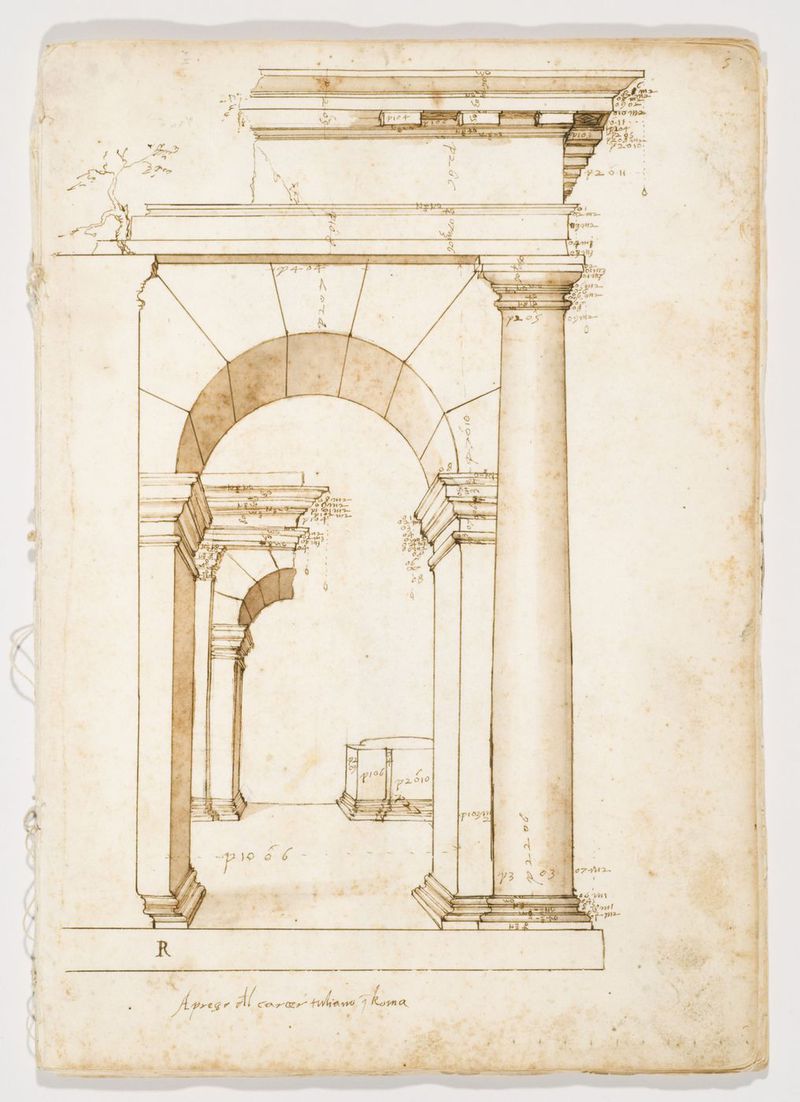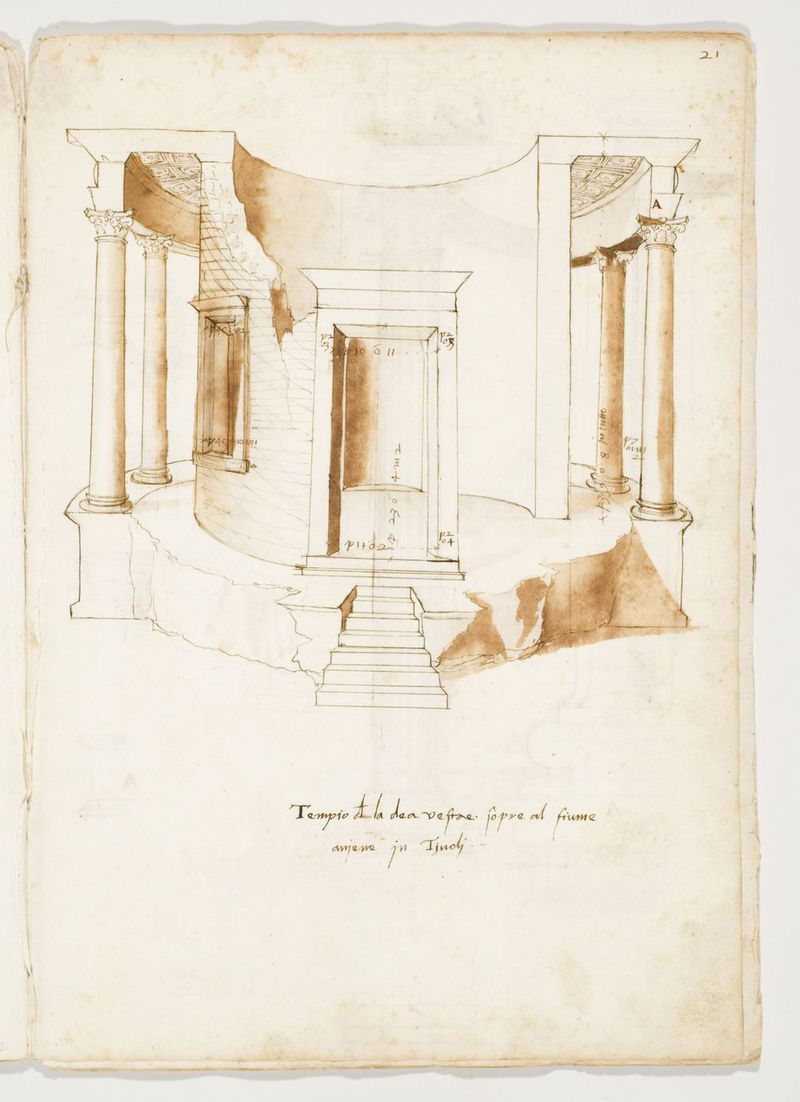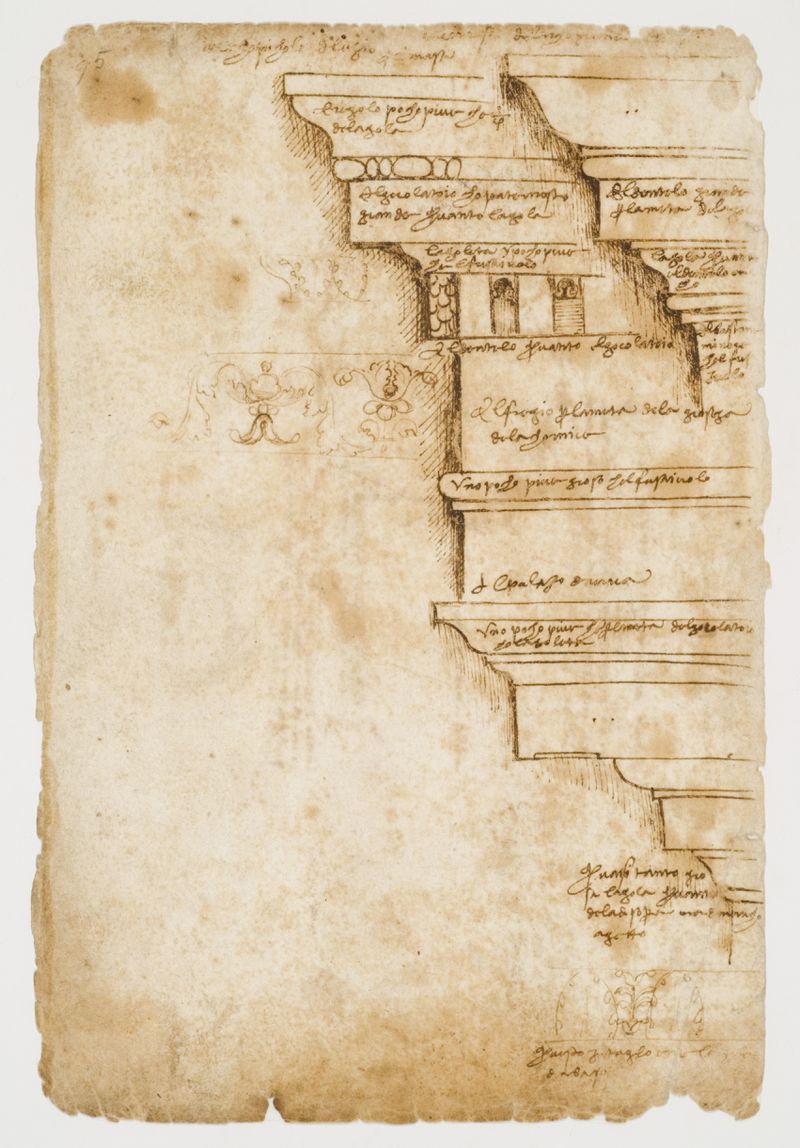Visiting Scholar Cammy Brothers presents her research.
In the Codex Barberini and the Taccuino Senese (c. 1465-1516), Giuliano da Sangallo made the first thorough attempt to document the monuments of Rome. Falling between the medieval model book and the printed architectural treatise, both chronologically and conceptually, his drawings defy conventional classification and explanation. They represent a unique moment of intersection between a poetic and analytic engagement with Rome, manifesting both Giuliano’s nostalgia for the lost splendor of Rome and his impulse as a practicing architect to collect principles and models. The coincidence of these interests—which would later divide into the pictorial view (veduta) and the architectural drawing—may be read in the layers of information he includes, from his painstaking wash rendering of the weathering of the stone and his invocations of a fantasy ruined landscape, to his carefully measured and orthogonally represented architectural details.
This lecture will focus on one aspect in particular of Giuliano’s books: their unusual and innovative conventions of representation. Architectural historians generally agree that architectural conventions were advanced in the context of the building of Saint Peter’s. However, the tremendous range and vitality of the representational techniques evident in the pages of Giuliano’s books suggest that it may have been the desire to represent ancient ruins that drove innovations. Documentation itself was a dynamic, transformative force: in seeking to represent a range of spatially complex and ornate monuments, Giuliano developed conventions equal to the task.
Cammy Brothers received her Ph.D. in 1999 from Harvard University, and since then has been Assistant Professor of Architectural History at the University of Virginia School of Architecture. She has published articles in Muqarnas and Annali di Architettura and essays in Architecture and Language (Cambridge U.P.), and Coming About, on subjects ranging from the Alhambra to Sixteenth Century architectural practice and theory. She has recently completed a book manuscript on Michelangelo, Drawing, and the Invention of Architecture, and is currently collaborating in an exhibition and catalogue of Michelangelo’s architectural drawings, to open in September. She has been a recipient of the Fulbright Fellowship, the American Academy in Rome Prize, and the Villa I Tatti Fellowship.
Cammy Brothers was a Visiting Scholar at the CCA in 2006.


